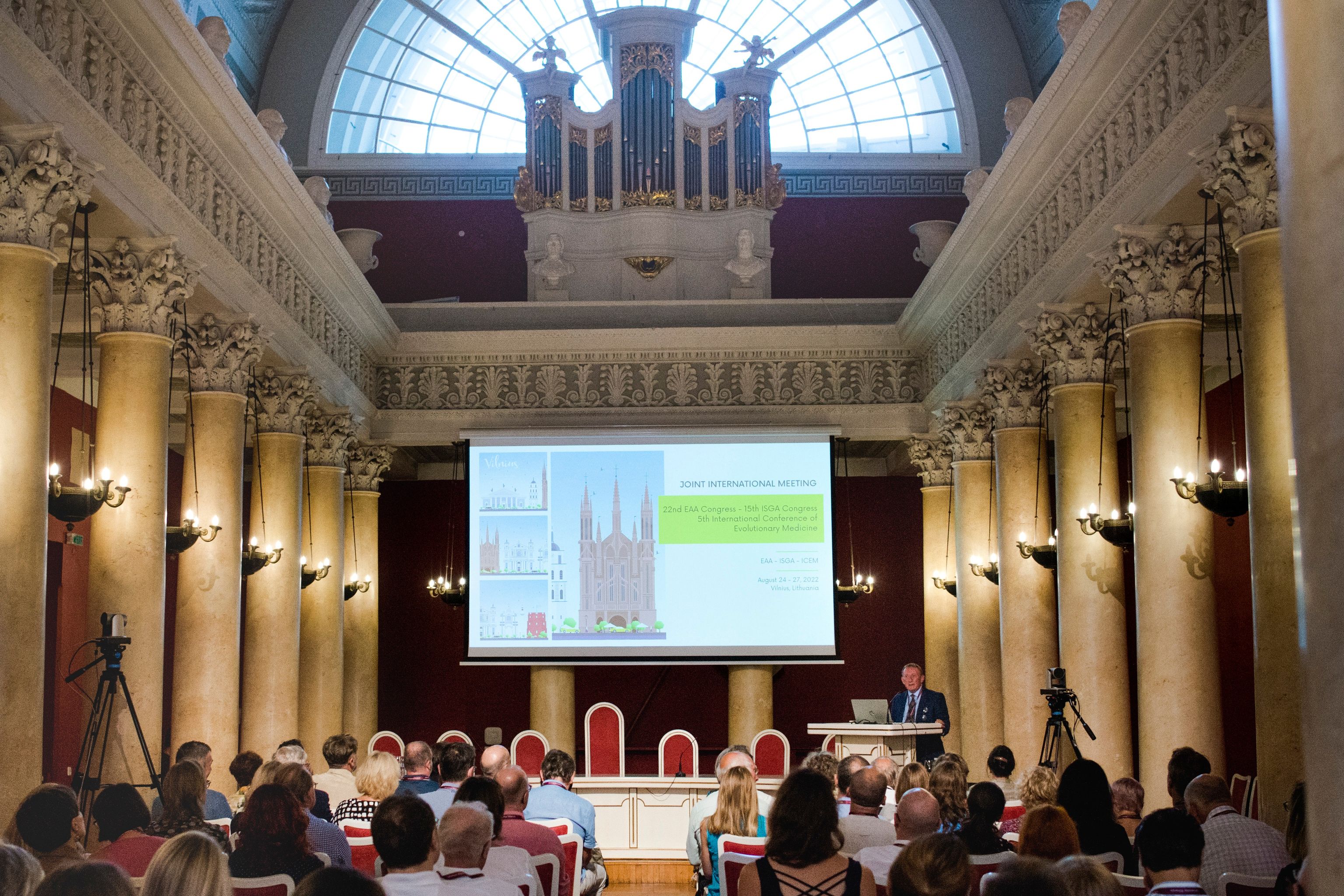 The first presentation was given by Professor Noel Cameron, President of the European Association of Anthropologists and professor at Loughborough University, UK. Photo: VU MF
The first presentation was given by Professor Noel Cameron, President of the European Association of Anthropologists and professor at Loughborough University, UK. Photo: VU MF
On 24–27 August, Vilnius University (VU) hosted an international scientific event combining the 22nd Congress of the European Anthropological Association, the 15th Congress of the International Society for the Study of Human Growth and Clinical Auxology and the 5th International Conference on Evolutionary Medicine for PhD students and young researchers.
The event opened with a presentation on the links between children’s growth and armed conflict
The international event started with a formal opening ceremony, during which the Rector of VU, Rimvydas Petrauskas, the Dean of the VU Faculty of Medicine, Algirdas Utkus, and the organiser of the event, Prof. Janina Tutkuvienė, Head of the Department of Anatomy, Histology, and Anthropology at the VU Faculty of Medicine and the Institute of Biomedical Sciences, delivered the welcome address.
The first presentation Child Growth and Armed Conflict was given by Professor Noel Cameron, President of the European Association of Anthropologists and professor at Loughborough University, UK. He noted that he had been prompted to choose this topic because of the Russian war against Ukraine, which began six months ago.
The professor said that there has never been a period in the world when there has not been a military conflict in one place or another. According to him, when it comes to military conflicts, it is difficult not to focus on the two biggest wars in human history, the First World War, 1914 to 1918, and the Second World War, 1939 to 1945: “However, over 40 countries around the world have been involved in military conflicts during the period 1999 to 2018”.
Referring to a study carried out by researchers at Uppsala University, Prof. Cameron noted that when you looked at the map of countries involved in military conflicts during 2015, it was clear that they made up most of the world. For the populations of countries in conflict, this period was associated with increased psychological stress, scarcity of water, food and other resources, and a lack or loss of income. While it can be argued that all the inhabitants of a conflicting state are more or less affected by the situation, children surely remain the most vulnerable.
In Prof. Cameron’s opinion, childhood trauma is a lifelong trauma that affects both mental and physical health. And the resulting consequences become significant not only at an individual level, but also at a community and national level. The professor compared the growth of children growing up in cities devastated by the Second World War (1939 to 1945)—in this instance—London (UK), Oslo (Norway) and Stuttgart (Germany): “Studies have shown that children’s growth slowed down during the conflict, and that after the conflict ended, the growth curve shot up, stabilising afterwards, despite the children living in the same conditions as before”.
Sharing, Discussion and Cooperation Encouraged
The three-day international event featured 180 presentations and was open to participants both in person and remotely. According to the event organisers, the European Anthropological Association Congress focused on the issue of emerging physical and physiological changes and pathologies of the human body in the context of global changes.
Meanwhile, the International Society for the Study of Human Growth and Clinical Auxology Congress, established to advance the knowledge of human growth and change in the fields of health and disease, provided an opportunity for anthropologists, human biologists, neonatologists, paediatricians, family physicians, and health care workers working on child and adolescent development to review current research and future projections.
PhD students and other young researchers from different research fields took part in the International Conference on Evolutionary Medicine, concerning The Interdisciplinary Approach to Human Health and the Diversity of Diseases. The conference focused on sharing research results and exploring ways to collaborate to solve problems of concern.
